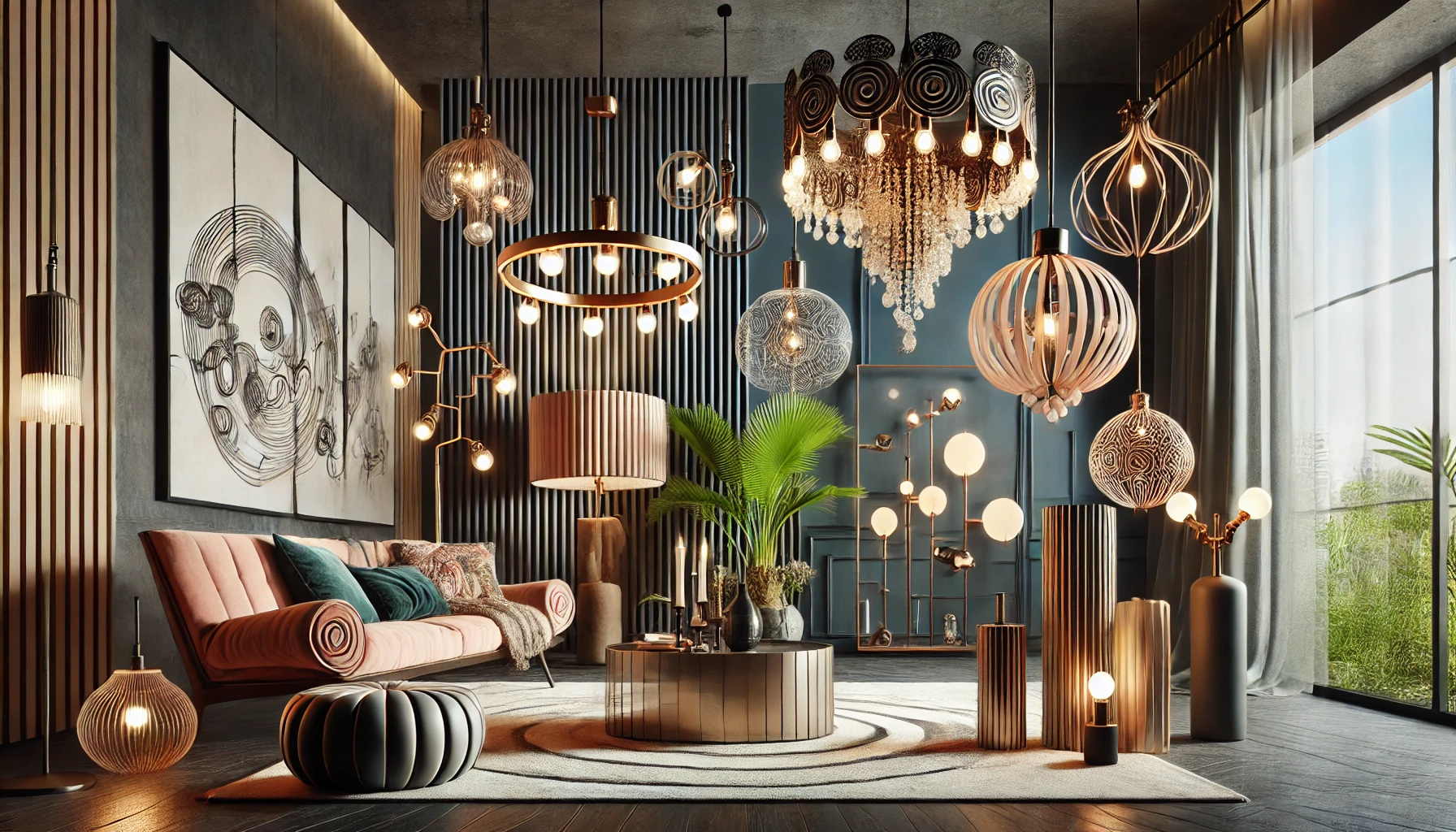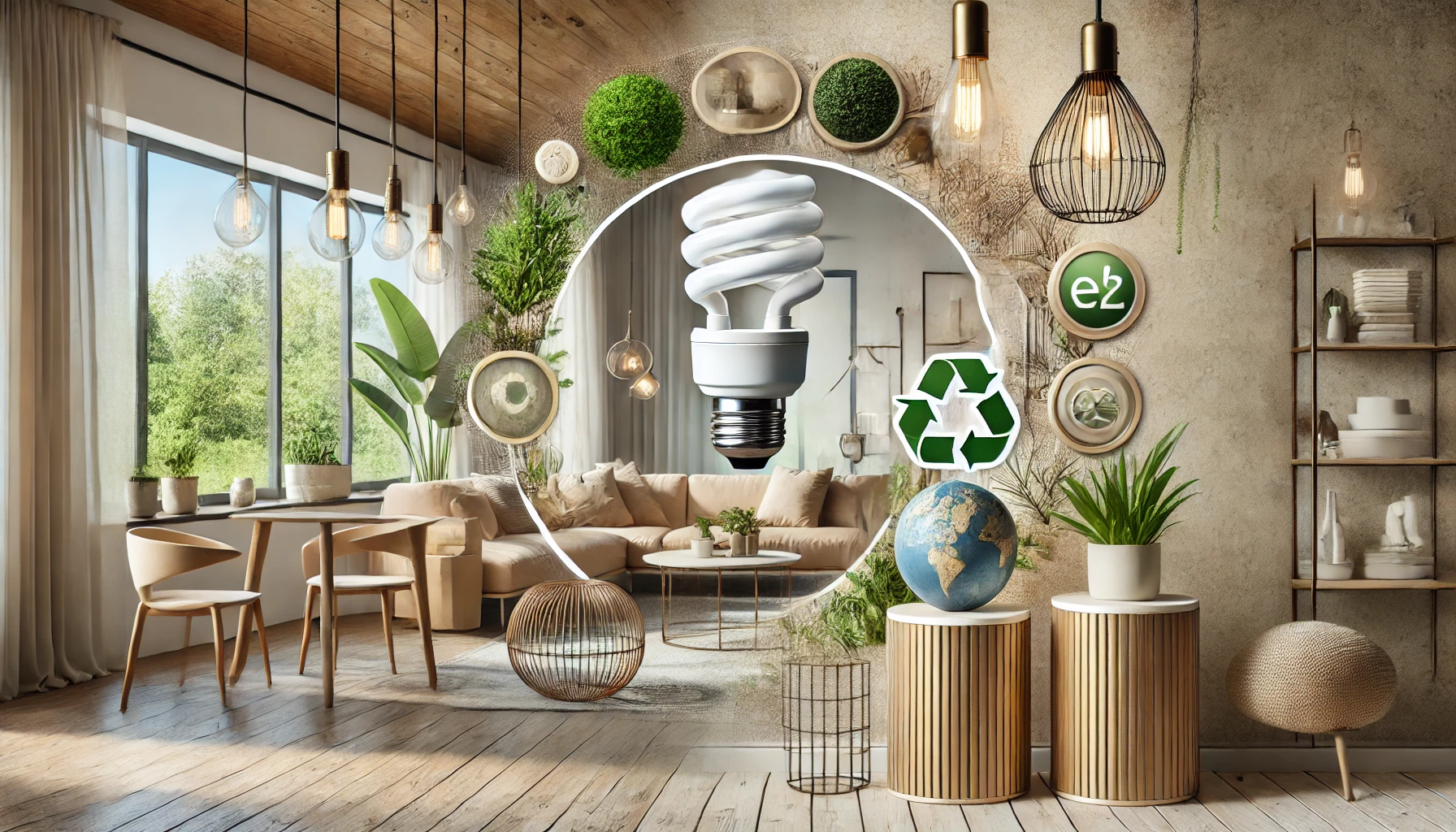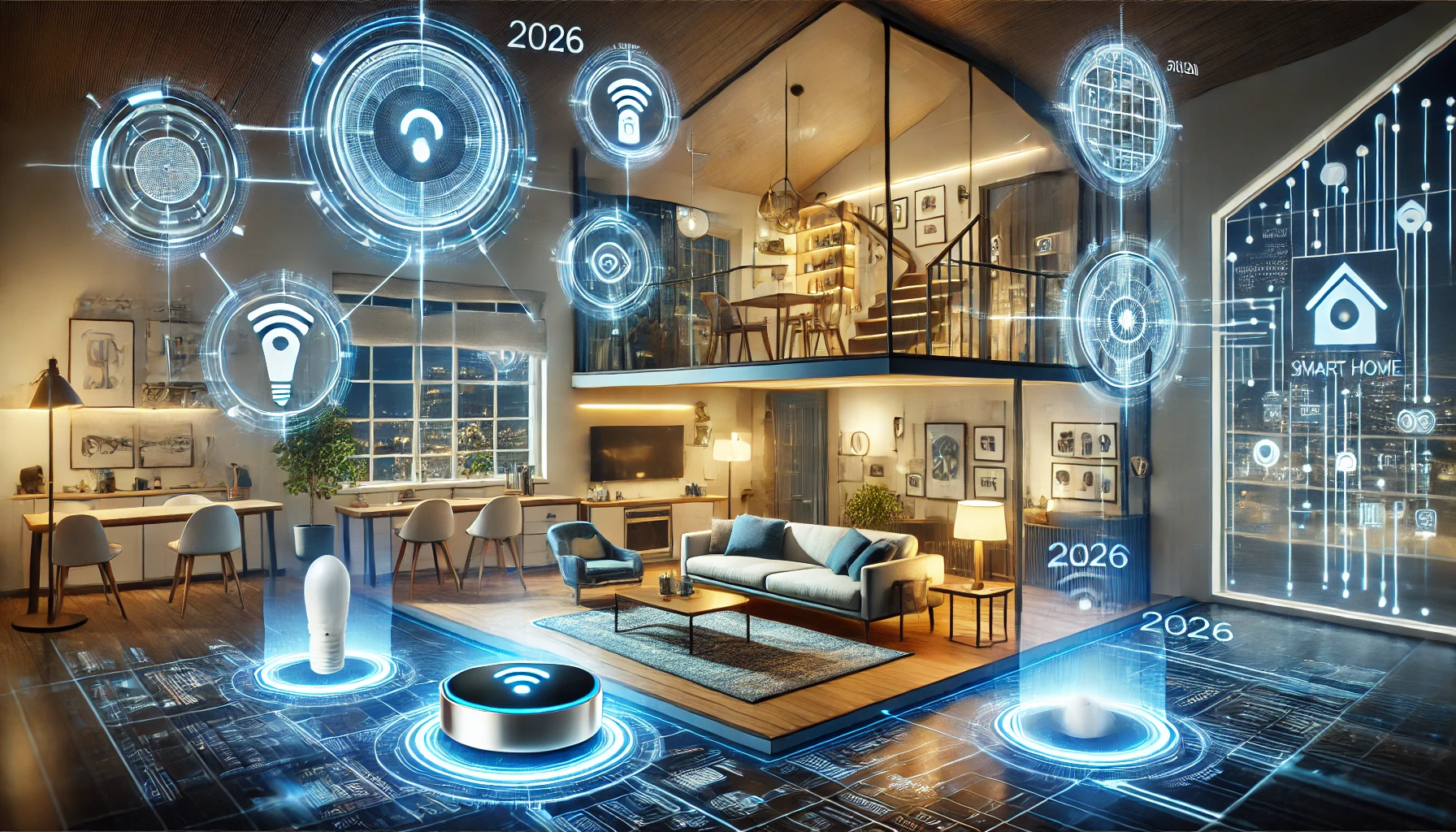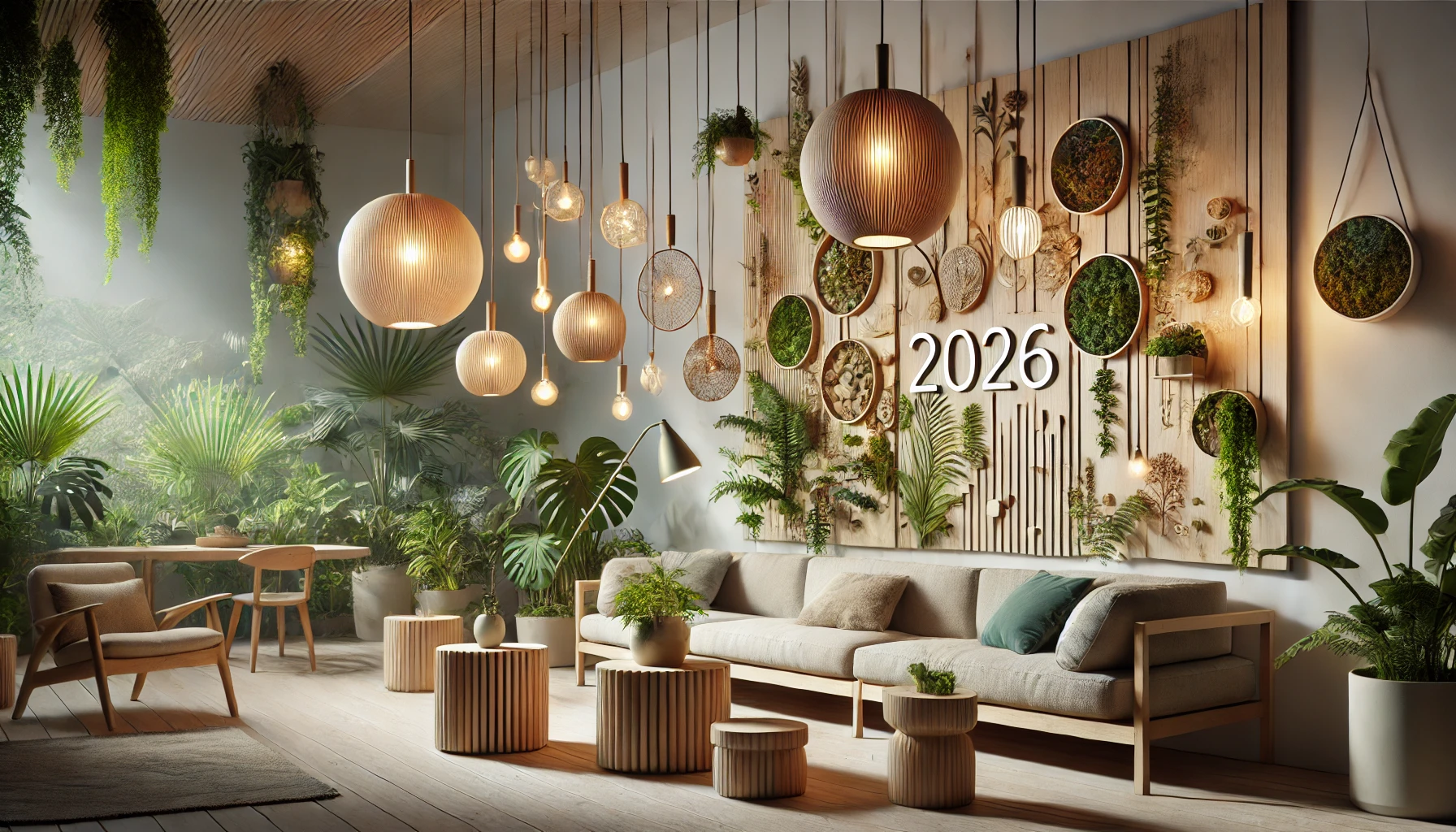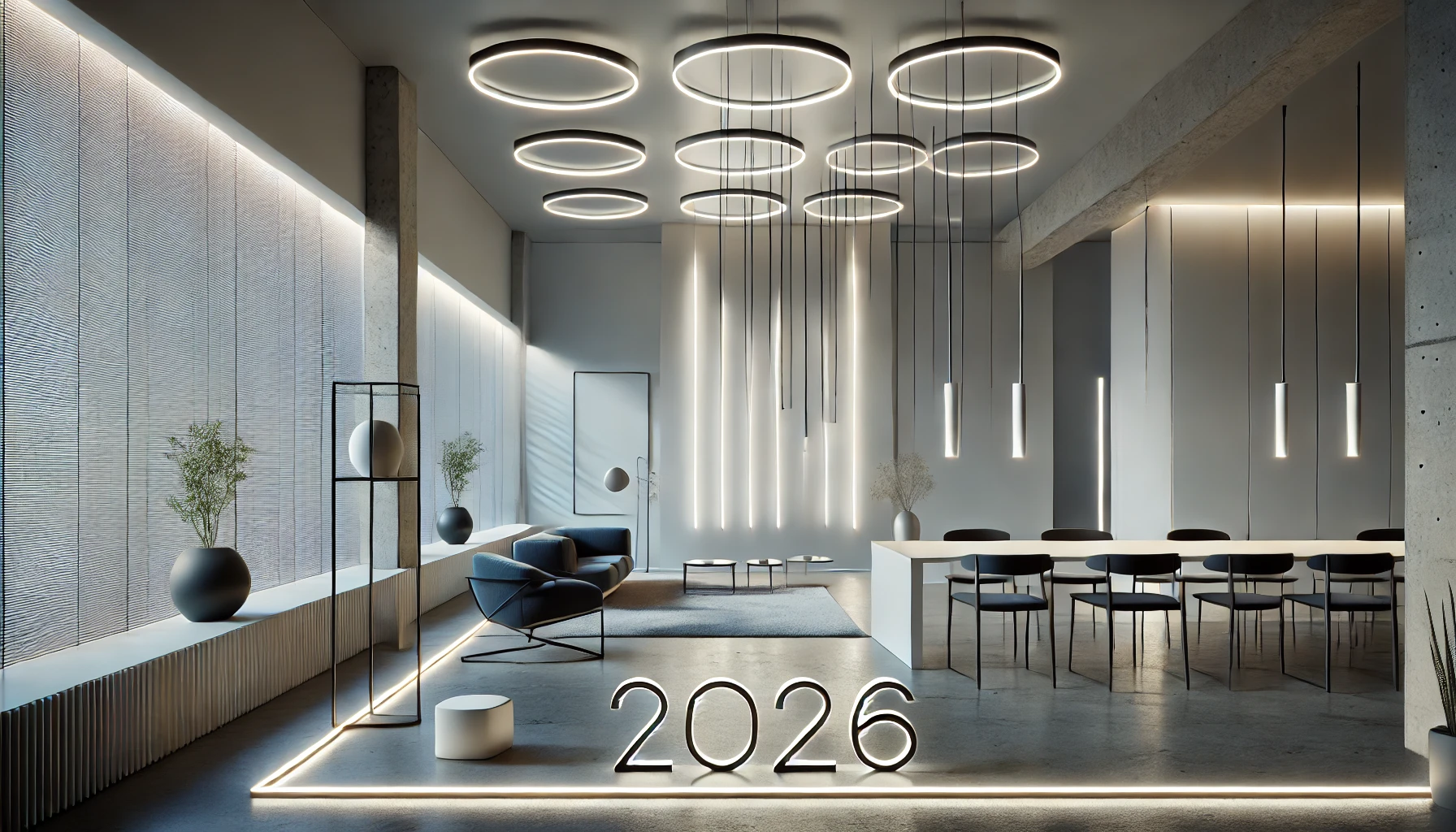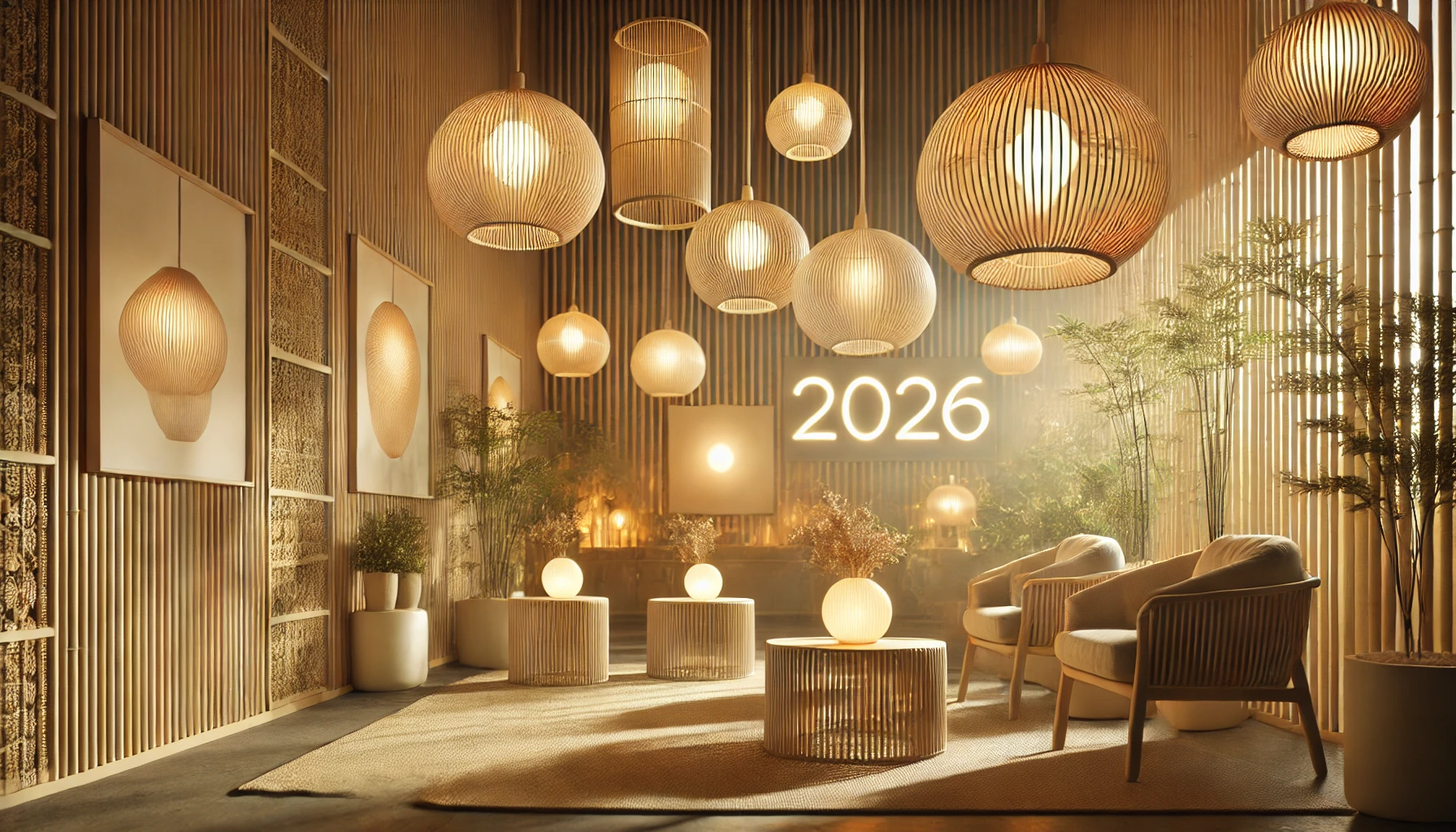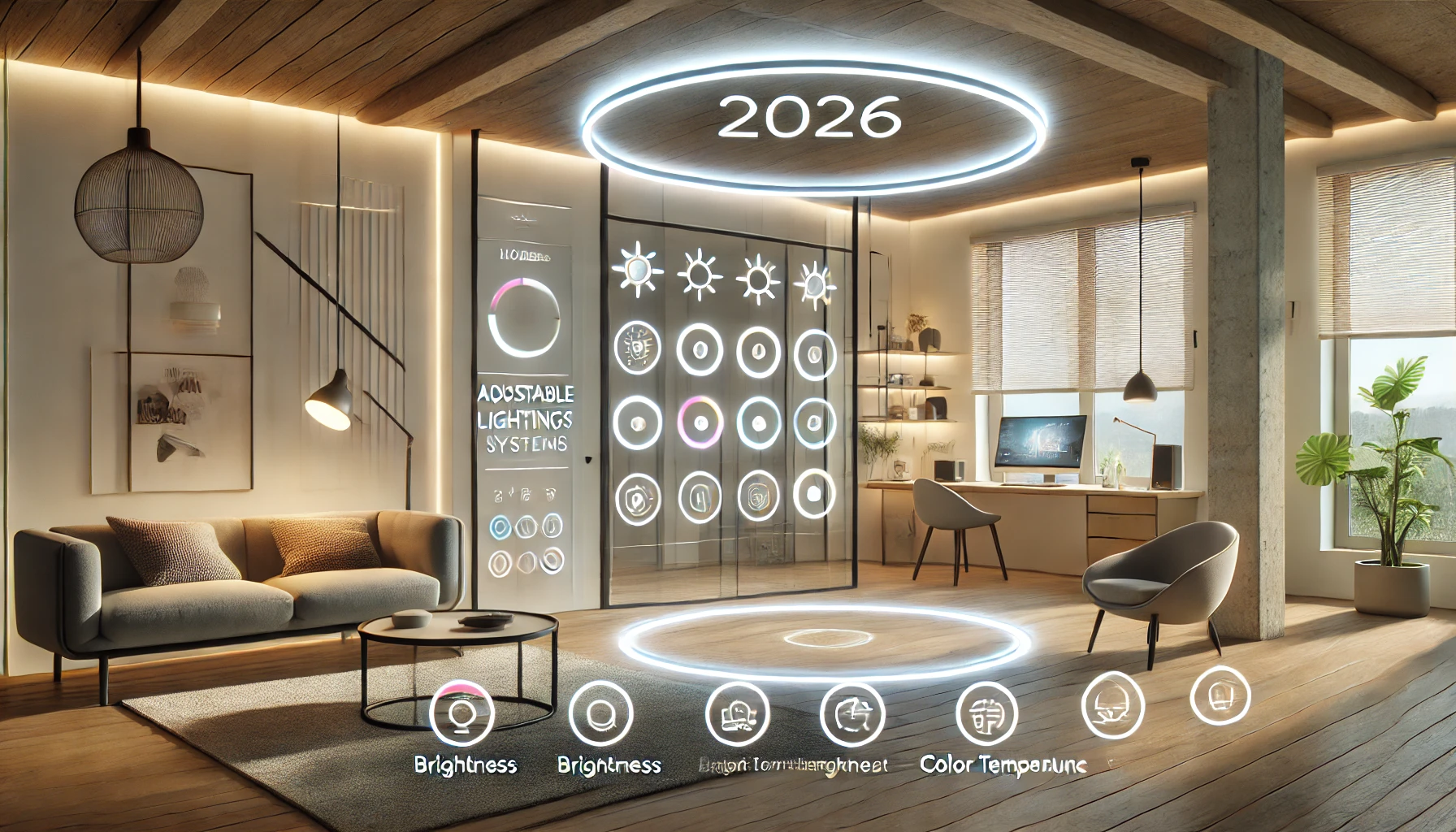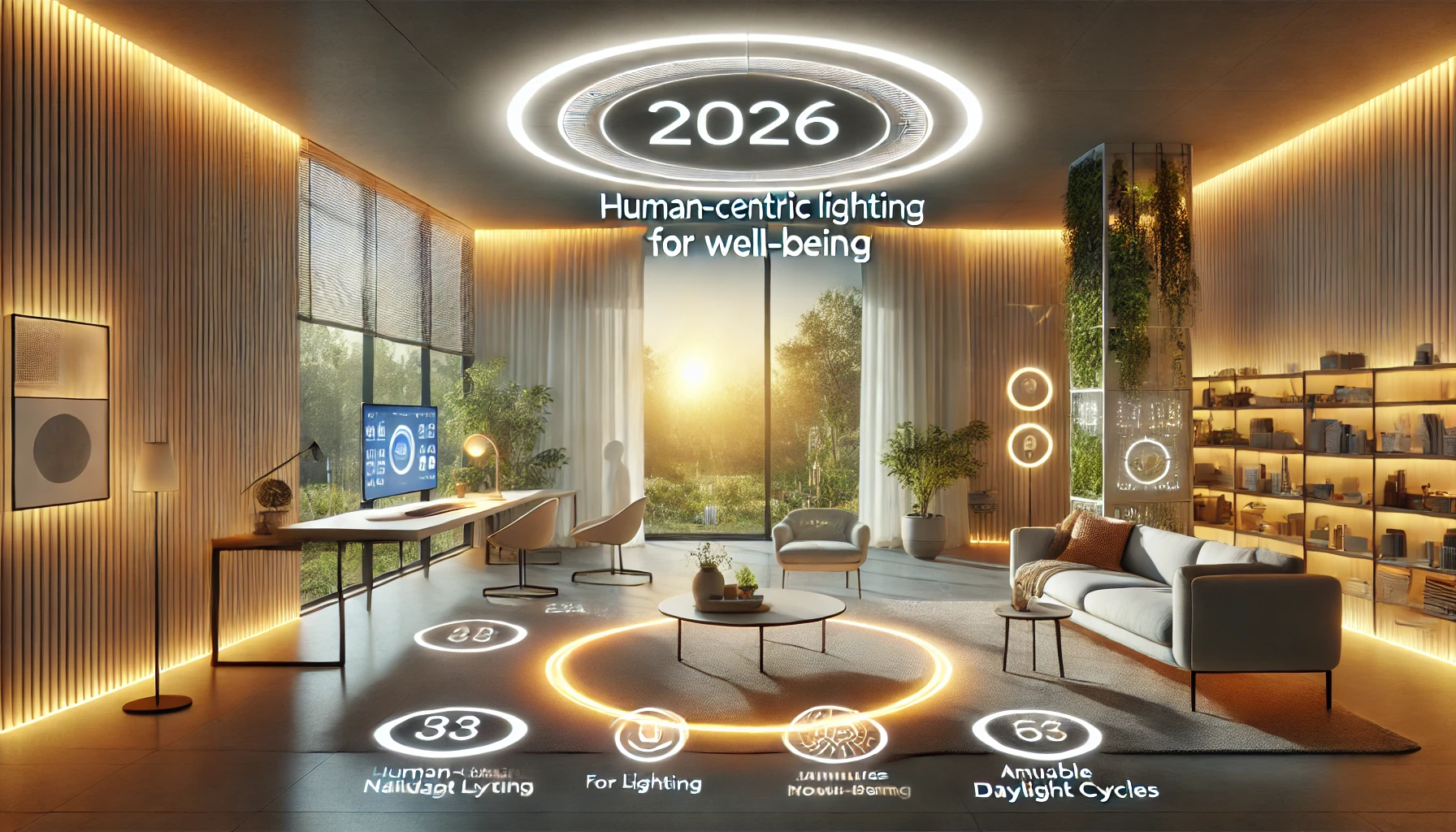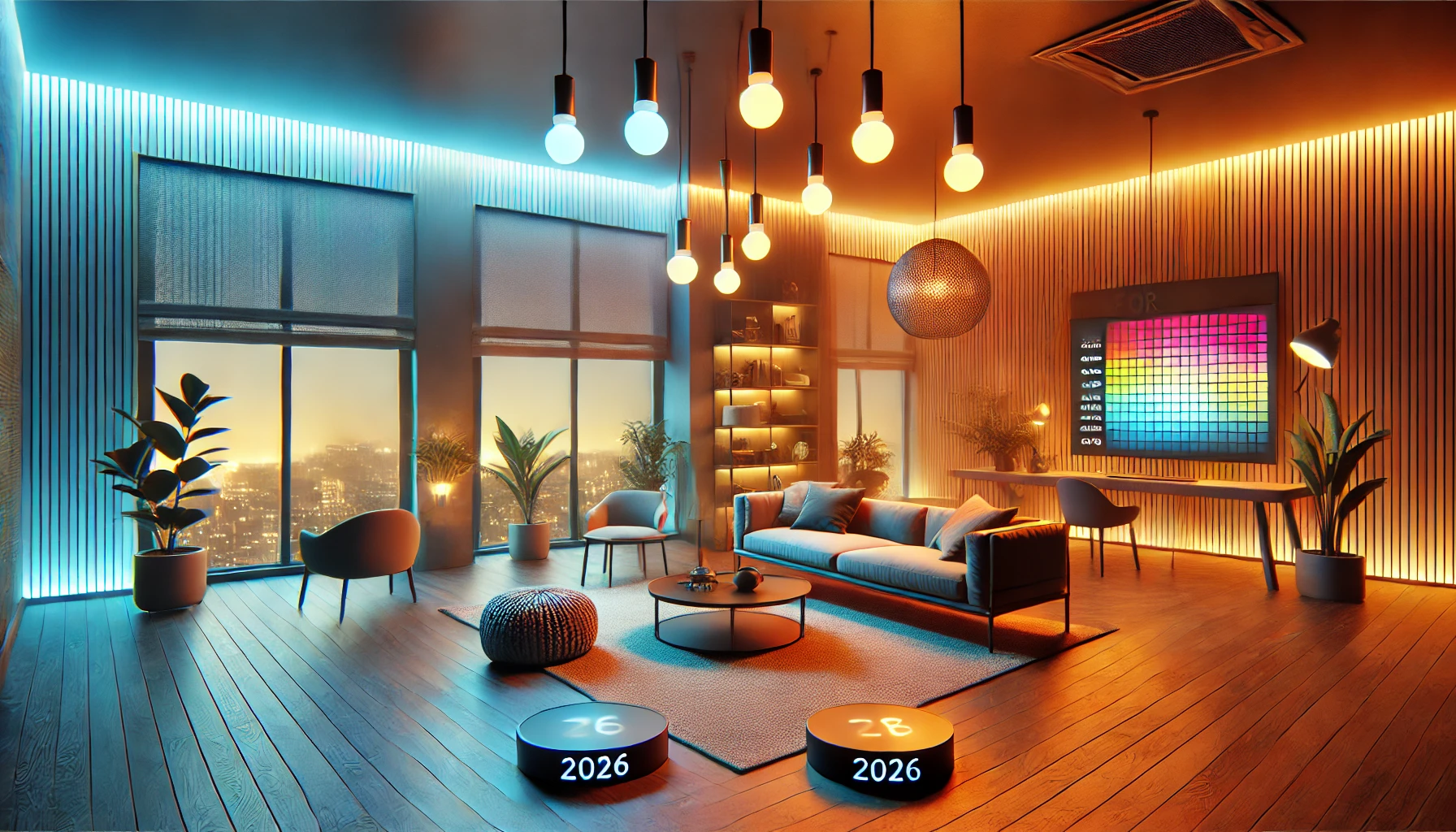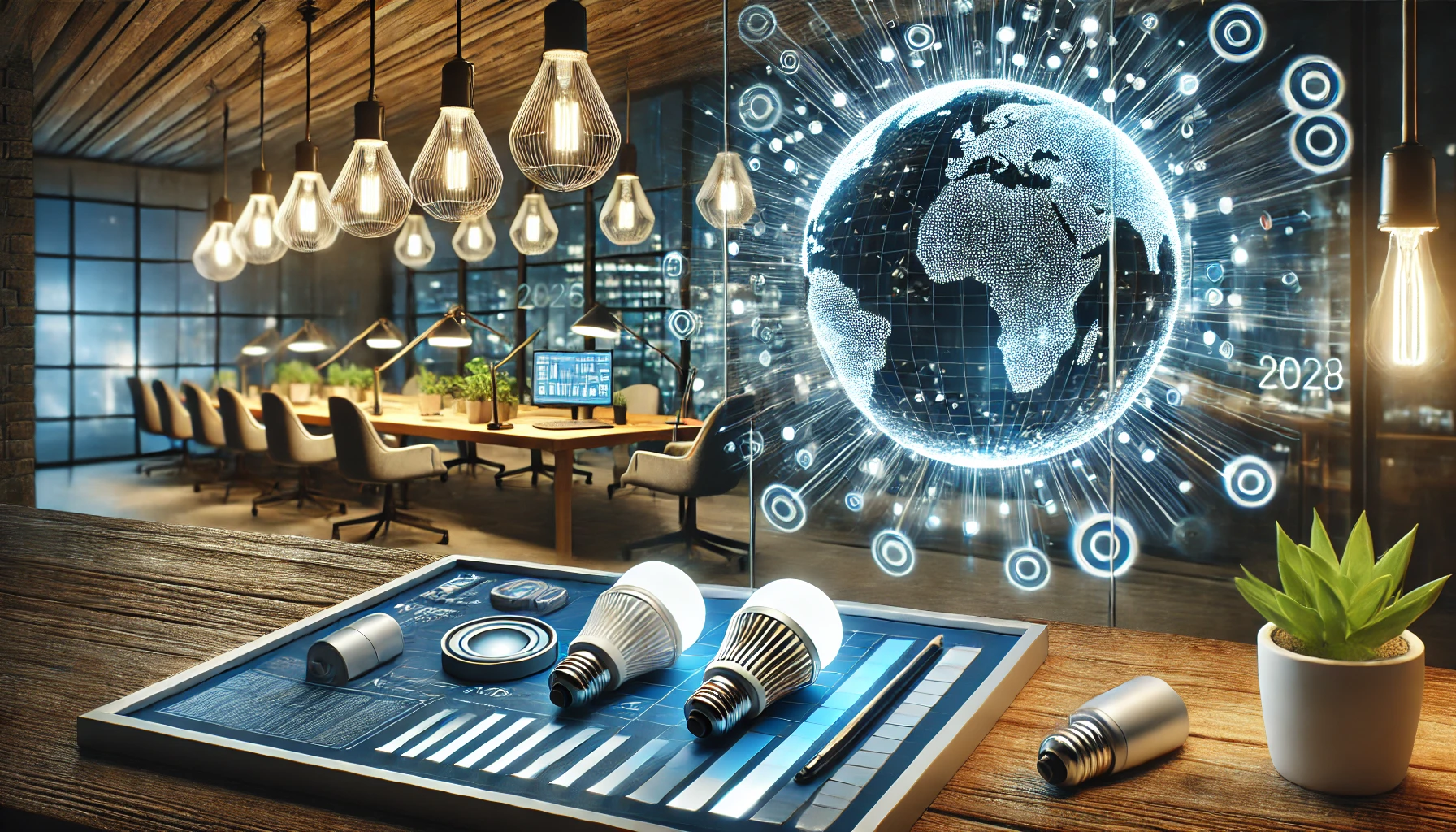As we step into 2026, the lighting industry is witnessing a surge of innovative trends and technological advancements that promise to reshape how we illuminate our spaces. The emphasis is on integrating smart technology, enhancing energy efficiency, and adopting sustainable materials. Here are some of the key trends to look out for:
- Smart Lighting Systems: The integration of smart technology in lighting systems is becoming increasingly prevalent. Smart lighting allows for greater control over lighting environments through apps and voice commands, offering features like dimming, color changing, and scheduling.
- Human-Centric Lighting: This trend focuses on the impact of lighting on human well-being. Human-centric lighting systems adjust the color temperature and intensity of light to align with the natural circadian rhythm, promoting better sleep, mood, and productivity.
- Adaptive Lighting: Adaptive lighting systems respond to the environment and user behavior. These systems can automatically adjust based on natural light levels, occupancy, and specific activities, providing optimal lighting conditions at all times.
- Advanced LED Technology: LED technology continues to evolve, with advancements in efficiency, lifespan, and color rendering. New LED designs offer improved light quality and more options for customization in various applications.
- Aesthetic Innovations: Designers are exploring new forms and materials, creating lighting fixtures that are not only functional but also artistic and decorative. From minimalist designs to bold statement pieces, lighting is becoming a key element in interior design.
- Integration with IoT: The Internet of Things (IoT) is playing a significant role in the lighting industry. IoT-enabled lighting systems can connect with other smart devices in a home or building, allowing for seamless automation and enhanced energy management.
Sustainable and Eco-friendly Lighting Trends 2026
Exploration of Eco-friendly Materials and Sustainable Practices in Lighting Design
In response to growing environmental concerns, the lighting industry is making significant strides towards sustainability. This involves using eco-friendly materials, adopting sustainable manufacturing practices, and creating energy-efficient products. Key trends in sustainable lighting for 2026 include:
- Use of Recycled and Natural Materials: Manufacturers are increasingly using recycled metals, glass, and plastics in lighting fixtures. Additionally, natural materials like bamboo, cork, and wood are gaining popularity for their renewable properties and aesthetic appeal.
- Energy-Efficient Technologies: Advancements in LED technology continue to lead the way in energy-efficient lighting. LEDs consume significantly less energy compared to traditional incandescent bulbs, reducing overall energy consumption and utility costs.
- Solar-Powered Lighting: Solar technology is becoming more efficient and affordable, making solar-powered lighting solutions viable for both residential and commercial applications. These systems harness sunlight during the day and store energy for use at night, reducing reliance on grid power.
- Lifecycle and Longevity: The focus is also on extending the lifecycle of lighting products. Durable materials and modular designs allow for easy repairs and upgrades, minimizing waste and the need for frequent replacements.
Importance of Energy Efficiency and Reducing Carbon Footprint
The lighting industry plays a crucial role in addressing energy consumption and reducing carbon emissions. By adopting energy-efficient technologies and sustainable practices, significant environmental benefits can be achieved:
- Reduced Energy Consumption: Energy-efficient lighting systems, such as LEDs and smart lighting controls, help to lower energy use, which in turn reduces greenhouse gas emissions from power plants.
- Lower Carbon Footprint: Sustainable materials and manufacturing processes result in lower carbon emissions during production. Additionally, energy-efficient lighting reduces the overall demand for electricity, contributing to a smaller carbon footprint.
- Cost Savings: While energy-efficient lighting solutions may have higher upfront costs, they offer long-term savings on energy bills and maintenance costs due to their longer lifespans and lower energy use.
- Environmental Impact: By reducing energy consumption and using sustainable materials, the lighting industry can significantly decrease its environmental impact, contributing to the global efforts to combat climate change.
In summary, the lighting trends of 2026 are defined by smart technology, human-centric design, and a strong emphasis on sustainability. These innovations not only enhance the quality and functionality of lighting but also promote environmental responsibility and energy efficiency.
Smart Home Lighting Innovations 2026
- Advancements in Smart Lighting Technology for Homes
- Adaptive Lighting: Lighting systems that adjust brightness and color temperature based on the time of day and user preferences, promoting better sleep patterns and reducing eye strain.
- Voice and Gesture Control: Enhanced voice and gesture control capabilities, allowing seamless interaction with lighting systems using smart assistants like Alexa, Google Home, or gesture recognition technologies.
- Energy Efficiency: Integration of advanced sensors and AI to optimize energy consumption, automatically turning off lights in unoccupied rooms and adjusting brightness levels to natural light availability.
- Integration with Smart Home Systems and IoT Devices
- Unified Ecosystems: Seamless integration with other smart home devices such as thermostats, security systems, and entertainment systems, creating a cohesive and interconnected home environment.
- IoT Connectivity: Enhanced IoT connectivity allowing lights to communicate with other devices, enabling scenarios like lights dimming when a movie starts or changing color to match the weather forecast.
- Smart Scheduling: Advanced scheduling features that allow users to set routines and automate lighting based on their daily activities and preferences, enhancing convenience and security.
Biophilic Design Lighting Trends for 2026
- Incorporation of Natural Elements and Biophilic Design Principles in Lighting
- Natural Light Integration: Use of large windows, skylights, and light shelves to maximize natural light penetration, reducing reliance on artificial lighting and connecting occupants with the natural environment.
- Organic Materials: Incorporation of natural materials such as wood, stone, and plant-based elements in lighting fixtures, creating a harmonious and calming indoor atmosphere.
- Dynamic Lighting Systems: Implementation of lighting systems that mimic natural light patterns, such as circadian lighting that changes color temperature and intensity throughout the day to align with the body’s natural rhythms.
- Benefits of Biophilic Lighting for Indoor Environments
- Improved Well-Being: Exposure to natural light and biophilic elements has been shown to reduce stress, enhance mood, and improve overall well-being.
- Enhanced Productivity: Biophilic lighting in workspaces can boost productivity and creativity by creating a more stimulating and pleasant environment.
- Health Benefits: Improved sleep quality and reduced risk of eyestrain and headaches due to better alignment with natural light cycles and reduced exposure to harsh artificial lighting.
Minimalist LED Lighting Fixtures 2026
- Trends in Sleek, Minimalist LED Lighting Designs
- Slim Profiles: The rise of ultra-thin LED panels and linear light fixtures that provide a clean, unobtrusive look, ideal for modern minimalist interiors.
- Invisible Light Sources: Innovative designs where the light source is hidden, creating an illusion of light emanating from the walls or ceilings without visible fixtures.
- Modular Systems: Versatile, modular lighting systems that can be customized and reconfigured to fit different spaces and design preferences, offering flexibility and personalization.
- Aesthetic and Functional Advantages of Minimalist Lighting
- Enhanced Aesthetics: Minimalist lighting fixtures blend seamlessly into contemporary interiors, enhancing the overall aesthetic without distracting from the architectural features of the space.
- Space Efficiency: Slim and sleek designs take up less space, making them ideal for smaller rooms or areas with limited ceiling height.
- Improved Light Quality: Advanced LED technology ensures high-quality, flicker-free light with adjustable color temperatures and brightness levels, providing optimal illumination for various activities and settings.
Organic and Natural Lighting Solutions 2026
Use of Organic Shapes and Natural Materials in Lighting Fixtures
The trend towards organic and natural elements in interior design extends to lighting solutions as well. Lighting fixtures are increasingly being designed with organic shapes, inspired by nature. Materials such as wood, bamboo, rattan, and natural fibers are becoming popular choices. These materials not only add a touch of nature to indoor spaces but also promote sustainability. Designers are crafting fixtures that mimic the forms of plants, flowers, and other natural elements, creating visually pleasing and environmentally friendly lighting options.
Enhancing Interior Spaces with Natural Light-Inspired Designs
Natural light-inspired designs aim to bring the calming and invigorating effects of sunlight indoors. This involves using lighting fixtures that replicate the color temperature and diffusion patterns of natural light. Techniques such as light layering, the use of diffusers, and the strategic placement of fixtures can simulate the dynamic quality of daylight. This approach enhances the aesthetic appeal of interiors while promoting a sense of well-being and connection to the natural world.
Customizable Lighting Systems 2026
Customization Options in Modern Lighting Systems
Modern lighting systems are increasingly offering customization options to meet individual preferences and specific needs. Smart lighting technology allows users to control the color, intensity, and timing of their lights via apps or voice commands. Customizable fixtures can be adjusted to fit different moods, activities, and times of the day. This trend reflects a shift towards more personalized and adaptive living environments, where lighting can be tailored to enhance comfort, productivity, and relaxation.
How Customizable Lighting Can Cater to Individual Preferences and Needs
Customizable lighting systems provide a versatile solution for diverse lifestyle requirements. For example, in a home office, the lighting can be adjusted for optimal brightness during work hours and a softer, warmer light for relaxation in the evening. In living spaces, lighting can be programmed to change throughout the day, mimicking natural light patterns to support circadian rhythms. This flexibility ensures that lighting not only meets functional needs but also enhances the emotional and psychological experience of the space.
Human-centric Lighting for Well-being 2026
The Impact of Human-centric Lighting on Health and Well-being
Human-centric lighting is designed to support the biological and emotional needs of people. By mimicking the natural daylight cycle, this type of lighting helps regulate circadian rhythms, which can improve sleep patterns, mood, and overall well-being. Studies have shown that exposure to the right light at the right time can enhance cognitive function, reduce stress, and boost productivity. Human-centric lighting solutions are increasingly being adopted in workplaces, schools, healthcare facilities, and homes to promote a healthier and more balanced lifestyle.
Trends in Lighting that Mimic Natural Daylight Cycles
Lighting technology is advancing to more accurately replicate the nuances of natural daylight. This includes dynamic lighting systems that change color temperature and intensity throughout the day, from the cool, bright light of morning to the warm, soft light of evening. Innovations such as tunable white LEDs and smart controls allow for precise adjustments that can align indoor lighting with the natural progression of sunlight. These trends are paving the way for environments that are more harmonious with our natural biological rhythms, fostering improved health and well-being.
Color Temperature Adjustable Lighting 2026
Innovations in Color Temperature Adjustable Lighting
In 2026, color temperature adjustable lighting, also known as tunable white lighting, has seen significant advancements. These innovations include:
- Dynamic Control Systems: Enhanced control systems allow users to adjust the color temperature seamlessly from warm to cool white, providing greater flexibility and personalization.
- Smart Integration: Integration with smart home systems enables automatic adjustments based on time of day, activities, and user preferences, promoting both comfort and energy efficiency.
- Improved LEDs: Advancements in LED technology have resulted in higher quality light output, better color rendering, and longer lifespan for tunable white lights.
Applications and Benefits of Tunable White Lighting Systems
Tunable white lighting systems offer numerous applications and benefits, such as:
- Residential Settings: They create a comfortable living environment by adjusting lighting to suit different activities, such as relaxing in the evening with warm light or using cooler light for concentration during the day.
- Workspaces: These systems improve productivity and well-being by simulating natural daylight cycles, helping to regulate circadian rhythms.
- Healthcare: In hospitals and clinics, tunable white lighting can enhance patient comfort and support various medical procedures by providing the appropriate light levels and color temperatures.
- Retail and Hospitality: By adjusting the lighting to match the time of day or the desired ambiance, businesses can create a more inviting and engaging atmosphere for customers and guests.
Energy-efficient Lighting Technologies 2026
Cutting-edge Energy-efficient Lighting Technologies
The year 2026 has introduced several groundbreaking energy-efficient lighting technologies:
- Advanced LEDs: Next-generation LEDs offer unprecedented efficiency and brightness, consuming less power while providing superior light quality.
- Organic LEDs (OLEDs): These flexible and efficient lighting solutions are gaining popularity for their ability to deliver high-quality, energy-efficient illumination in various shapes and forms.
- Hybrid Solar Lighting: Combining solar power with energy-efficient lighting systems, hybrid solutions reduce reliance on the grid and lower energy costs.
Role of Energy Efficiency in Modern Lighting Design
Energy efficiency plays a crucial role in modern lighting design, impacting both environmental sustainability and economic savings:
- Sustainability: Reducing energy consumption helps decrease greenhouse gas emissions and the overall carbon footprint, contributing to global environmental goals.
- Cost Savings: Energy-efficient lighting technologies lower electricity bills for both residential and commercial users, providing long-term financial benefits.
- Regulations and Standards: Governments and organizations worldwide are setting stricter energy efficiency standards, driving innovation and adoption of greener lighting solutions.
Decorative Lighting Trends for Modern Interiors 2026
Trends in Decorative Lighting for Enhancing Interior Aesthetics
Decorative lighting in 2026 is characterized by several key trends that enhance the beauty and functionality of modern interiors:
- Minimalist Designs: Clean lines, simple shapes, and unobtrusive fixtures are in vogue, complementing minimalist interior design styles.
- Natural Materials: Lighting fixtures made from natural materials like wood, stone, and metal are popular for their organic and warm appeal.
- Statement Pieces: Bold, artistic lighting pieces that serve as focal points in a room are increasingly sought after for their ability to add character and drama to spaces.
Popular Styles and Designs in Decorative Lighting for 2026
Several styles and designs are gaining traction in 2026:
- Vintage and Retro: Nostalgic designs with a modern twist, such as Edison bulbs and mid-century modern fixtures, continue to be popular.
- Industrial: Exposed bulbs, metal finishes, and utilitarian designs are favored for their raw, edgy look.
- Smart Decorative Lighting: Integrating smart technology into decorative fixtures allows for customizable lighting effects and remote control, combining aesthetics with functionality.
Conclusion
Summary of Key Trends and Their Impact on the Future of Lighting Design
The lighting design landscape in 2026 is shaped by significant trends, including advancements in color temperature adjustable lighting, energy-efficient technologies, and innovative decorative lighting styles. These trends collectively contribute to creating more comfortable, sustainable, and aesthetically pleasing environments.
Final Thoughts on the Evolution of Lighting Trends in 2026
As we move forward, the continuous evolution of lighting technologies and design philosophies will play a pivotal role in enhancing our living and working spaces. Embracing these trends will not only improve our quality of life but also support global efforts towards sustainability and energy conservation. The future of lighting design looks promising, with endless possibilities for innovation and creativity.

